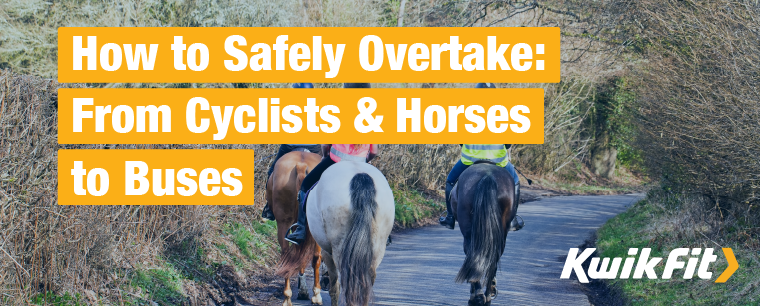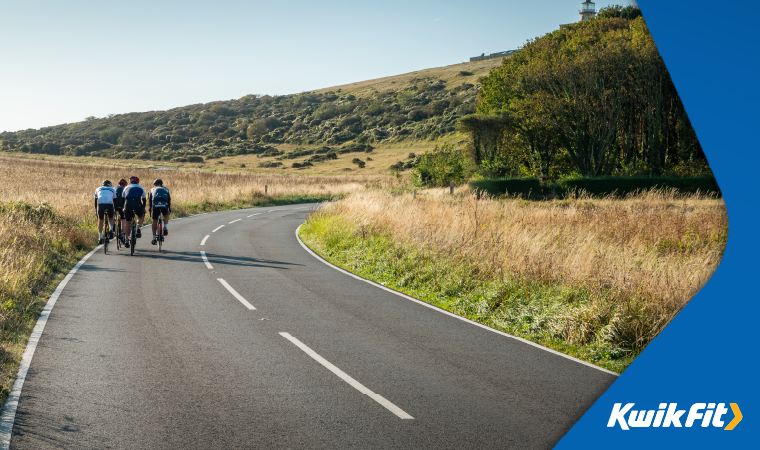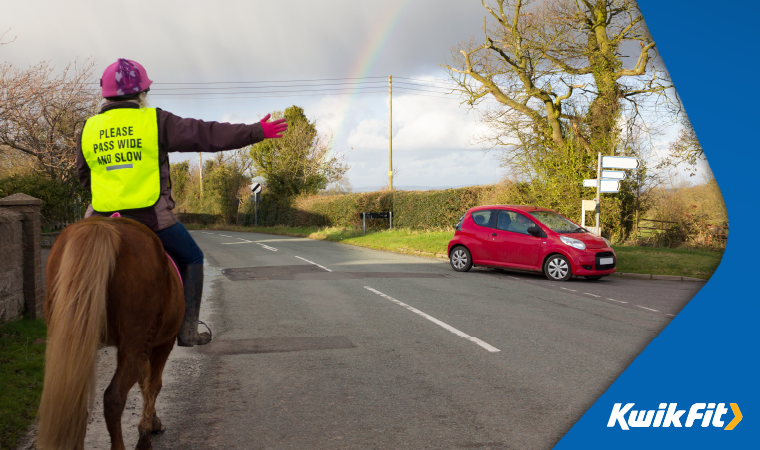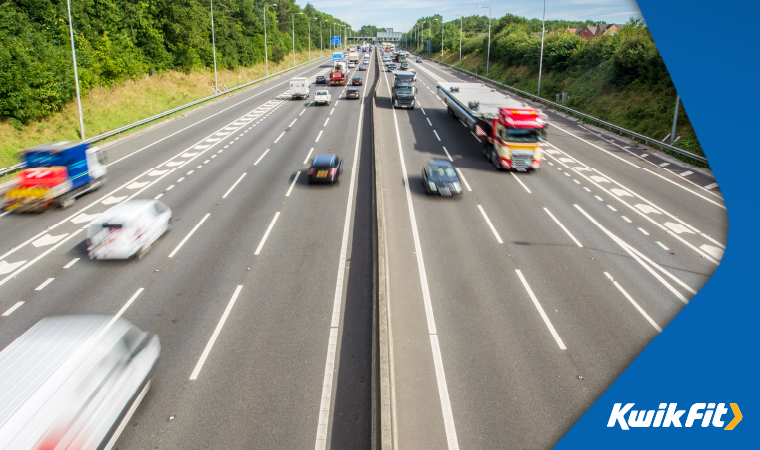How to Safely Overtake From Cyclists & Horses to Buses
Jack Dreyer | Friday 23rd February 2024 3:00pm

Have you ever found yourself needing to overtake a cyclist and felt unsure about the safest way to proceed? Whether you're navigating urban streets or rural landscapes, mastering the art of safe overtaking is crucial for every driver.
From cyclists pedalling along the roadside to horses trotting in your path, and the frequent stops of city buses, understanding the nuances of safely moving past these road users is not just about following the law - it's about ensuring the safety of everyone.
Letís explore the considerations for overtaking, ensuring you stay safe and confident behind the wheel.
Laws on overtaking
According to the Highway Code, before you begin overtaking you need to make sure that:
- The road is sufficiently clear ahead
- Road users are not beginning to overtake you
- There is a suitable gap in front of the road user you plan to overtake
Once youíre happy that this criteria is met, the key sequence to remember is: Mirror, Signal, Manoeuvre. But there are some specifics that you can keep in mind, depending on the type of road user youíre trying to overtake. Take a look at our handy guidance below.

Overtaking cyclists
When overtaking cyclists, it's essential to recognise their vulnerabilities - due to their exposure and the lack of protective barriers, compared to drivers of cars. Leave at least 1.5 metres when overtaking cyclists at speeds of up to 30 mph - the legal passing distance - and ensure youíre leaving even more space if youíre travelling at higher speeds. In urban areas, where traffic is denser, and road widths vary, extra caution and lower speeds can significantly reduce risks. If in doubt, slow down to make a judgement call on whether or not itís safe.
Conversely, rural roads may offer more visibility but require vigilance for sudden bends. In narrow lanes or poor weather conditions, patience and even more significant clearance are advisable, as cyclists may need to navigate around obstacles or may be less stable.
Overtaking horses and livestock
When encountering horses and livestock on the roads, it's important to understand their unpredictable behaviour and the potential for them to be startled. Drivers should significantly reduce their speed and maintain a generous distance to avoid causing stress or fear in these animals. The Highway Code advises that drivers pass ďhorse riders and horse-drawn vehicles at speeds under 10 mph and allow at least 2 metres of spaceĒ.
Safe passing involves using signals to alert other road users and proceeding with patience. If an animal appears frightened, stop and give it space to calm down, avoiding sudden movements or noises that could exacerbate the situation, ensuring safety for all parties involved.

Overtaking motorcycles and scooters
Overtaking motorcycles and scooters requires recognising their unique risks, such as smaller size and increased vulnerability. Similar to cyclists, it's crucial to adjust your overtaking approach to accommodate their speed and ensure you maintain strong visibility of where the riders may be at all times.
Awareness of blind spots is essential, as motorcycles can easily be obscured from view. Provide ample space when passing, and check mirrors and blind spots frequently to prevent accidents. This becomes even more important in bad weather, or when visibility may be reduced. If youíre uncertain, do not proceed to overtake.
Overtaking buses and large vehicles
In a different way than bikes and motorbikes, buses, lorries, and other large vehicles also require a specific approach when it comes to overtaking. The best advice is to drop back further from the vehicle youíre considering overtaking, which will increase your ability to see further ahead - as well as help to ensure that the driver of the large vehicle can see you in their mirrors.
A key factor is ensuring that, if you were to proceed, you would have enough time to complete your overtaking manoeuvre - you must determine this before you start. Remember that it takes longer to pass a larger vehicle, so if youíre unsure whatís coming in the opposite direction, or how long it would take you to move ahead, itís safer to stay where you are. For similar reasons, stay vigilant if the car in front of you is attempting to overtake; they may have misjudged and need to drop back if they run out of time or room.

Keeping all road users safe
Donít forget that vulnerable road users need to be protected. According to the Highway Code, ďin any interaction between road users, those who can cause the greatest harm have the greatest responsibility to reduce the danger or threat they pose to othersĒ - which means that, when it comes to cyclists, pedestrians, horse riders, and motorcyclists, it is the responsibility of the driver of the car to ensure that the way they're behaving on the road is safe.
Because of this, itís vital to take care and give plenty of space when overtaking - even more so in bad weather, strong winds, complex road systems, or at night. If youíre not entirely convinced that itís safe to proceed with an overtaking manoeuvre, donít. Itís always better to wait a little bit longer than to put people at risk.
For more advice on navigating roads and driving best practices, be sure to keep up with the Kwik Fit blog. And, for any questions you may have about driving and keeping your vehicle road-worthy, get in touch with our team of experts today.
Any facts, figures and prices shown in our blog articles are correct at time of publication.
Featured Articles
Is it Illegal to Drive With One Headlight?
Saturday 19th July 2025
Wondering if itís illegal to drive with one headlight? Learn about the safety risks and penalties of illegal blown bulbs and why you should fix them promptly.
Air Con in EVs & Hybrids: Experts Answer Your Questions
Monday 30th June 2025
Does air con drain EV batteries? Can you use the air con while charging an electric car? Find out the answers to these questions & more from Kwik Fitís experts.
Why Is Your Car Making a Noise? Fixes & Tips
Friday 13th June 2025
When your car starts making unexpected noises, it can certainly be quite disconcerting; it may be nothing to worry about, but hereís what you need to know.









